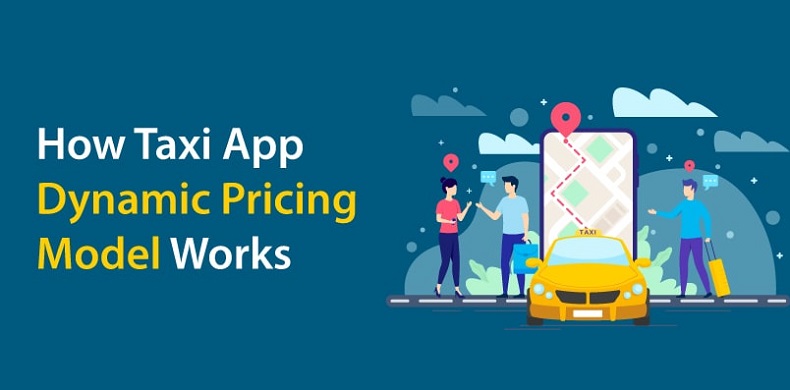How Taxi App Dynamic Pricing Model Works
How Taxi App Dynamic Pricing Model Works?
You might have faced a price surge in a cab at least once in your life.
Since it's not uncommon and evolving at a break-neck speed, it has garnered much attention in the last year.
When the quantity of ride requests exceeds the supply of cabs in a specific zone, dynamic pricing, also known as surge pricing, is a technique/mantra utilized by various companies such as Uber and Uber clone applications.
When it comes to on-demand taxi services, this pricing strategy has sparked a lot of debate.
And this raises a question: How does the dynamic pricing model work in a taxi app?
What is Surge Pricing?
The dynamic pricing model is an economic term for a time-based pricing technique in which enterprises create flexible prices based on market demand. Airlines, hotels, and railways all employ this pricing mechanism. Uber clone app ride-sharing models use the same pricing scheme as well.
Delve into the mechanics of dynamic pricing in taxi apps with this detailed blog post. Learn how dynamic pricing models work to optimize fare calculations based on demand and supply fluctuations. Understand the benefits of dynamic pricing in ensuring fair compensation for drivers and providing cost-effective solutions for passengers.
Taxi aggregators utilize a costing algorithm to determine the demand-supply balance in a given zone and set the charge accordingly. When the number of cabs available in a location exceeds the number of ride requests, cab costs rise. As a result, available cabs charge 3 to 5 times the typical fare during peak hours to meet consumers' needs.
How Does Surge Pricing Work?
There have been numerous debates on how the skyrocketing price mechanism in on-demand cabs works. However, the logic used is clear and straightforward. When supply falls short of demand, the price is double to bring supply and demand back into balance.
When the number of requests for cabs is more than the number of available cabs in a specific zone, the commuter will see a multiplier to the standard prices on the uber clone apps on-demand ride-sharing taxis. The multiplier rises with the demand for rides in the commuter's specific area.
After a predetermined interval, the algorithm monitors demand, and prices rise until supply and demand balance. Consider Uber, one of the first companies to implement surge pricing. The automatic pricing algorithm checks the number of requests and available cabs in the zone every five minutes. Whenever demand and supply are out of balance, the base fare is multiplied. The cab aggregator can immediately link the rider with the driver and get the system up and running this way.
What is the Need for Dynamic Surge?
Dynamic pricing is an economic mechanism that aims to close the imbalance between supply and demand. It is an essential tool for cab service and uber clone app providers to balance supply and demand when there is an imbalance. It is an excellent alternative to the rider's worries about "no cab available." It aids the service provider in increasing efficiency and maximizing the number of rides available.
Because price inflation reduces demand for rides during peak hours, it benefits and helps cab aggregators. Riders can travel to another zone or wait for the surge to subside. Consequently, those riders who require an immediate cab and are ready to pay a higher cost have a chance. In addition, it means a faster pick-up time and a better customer experience for the service providers.
How Does Our Uber Clone Pricing Work?
When you request a ride on a Sunday night, the pricing may differ from the price of the identical trip a few days earlier. It is due to our dynamic pricing system, which adjusts rates based on various factors, including your route's length and distance, traffic, and current rider-to-driver demand. During hectic seasons, this may result in a temporary price increase.
Also Read: Best Software Ideas for Startups & Smes to Build Their Brand
Why Do Rates Change?
The Uber clone app employs variable charges to attract more drivers to the road and help deal with more rider requests when demand surges. When we notify you of an increase in Uber fares, we tell drivers. Then, if you choose to request your ride, you'll receive a notice on the app informing you that the rates have changed.
Price Normalization Demand will become more manageable when more drivers get on the road, ride requests are fulfilled, and fares should return to normal.
Uber Peak Hours If you're a regular Uber passenger, you're undoubtedly already aware of the company's peak times, when demand and pricing are likely to rise. These are some of them:
- 1. On Friday and Saturday Evenings
- 2. Rush Hour after Work
- 3. Large-Scale Gatherings and Festivals
With the dynamic pricing of the Uber-like app, you may ensure that there are always enough drivers to meet all of our ride requests so that you can get a ride quickly and - whether you and your friends take the journey or wait for the rush to pass is entirely up to you.
Will Surge Pricing exist in the future?
Surge pricing does not appear to be going away anytime soon. Other on-demand sectors make extensive use of it as well. For example, businesses create innovative ways to balance supply and demand by employing data-based algorithmic decisions. In addition, real-time tracking makes it easier to implement dynamic pricing systems as technology advances.
Dynamic pricing benefits all stakeholders in the ride-sharing ecosystem if done correctly and under the rules. The surge pricing system guarantees riders a safe ride-on-demand experience by balancing supply and demand. According to many studies, riders, drivers, and service providers benefit from dynamic pricing with maximum restrictions.
CONCLUSION
So, that concludes the lesson on how the Uber model works, allowing you to understand why Uber rates fluctuate and when the typical peak hours for a higher Uber charge are.
Are you looking to build an Uber clone app for your business? If so, your search ends here!
Grepix Infotech is a leading Uber clone app development company that offers a comprehensive suite of app development solutions for building the feature-rich uber clone app for customers, passengers, and admin. Our Uber clone script connects users to your services with a few keystrokes, giving them the highest ease.







